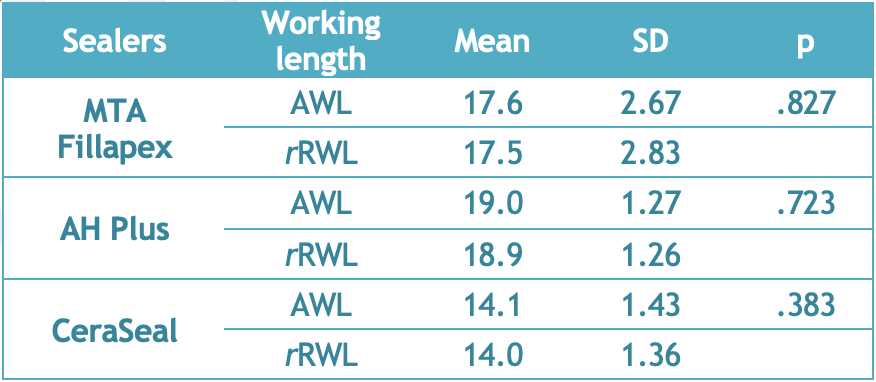Comparison of the accuracy of different electronic apex locators used in working length determination via changing of initial cleaning solutions
Abstract
Aim: The aim of this study is to compare the accuracy of the Root ZX Mini, Raypex 6, E-Pex Pro, and Propex Pixi electronic apex locators by changing the initial cleaning solutions (NaOCl vs. EDTA).
Methodology: Eighty mandibular premolar teeth were used. Radiographs were obtained from the mesio-distal and bucco-lingual angles for all teeth, and teeth with suspected external or internal root resorption and/or calcified canals were not included in the study. The true canal lengths of the teeth were determined with a precision of 0.01 mm with a stereomicroscope at x5 magnification by placing a #20 K-type canal file into the root canal. The samples were then embedded in freshly mixed alginate blocks up to the cemento-enamel junction. The coronal 1/3 was pre-enlarged with a Protaper SX instrument. Electronic apex finders (Root ZX Mini, Raypex 6, E-Pex Pro, Propex Pixi) specified on each tooth were used, and measurements were made by changing the initial solutions (NaOCl vs. EDTA). Distilled water was used between application of 5.25% NaOCl and 17% EDTA to prevent chemical interactions. Three measurements were taken for each tooth, and the average of these 3 measurements was taken as reference. The data obtained in this study were analyzed.
Results: There were no statistically significant differences between the solutions in terms of the measurement values and actual length values found by each device (p>0.05). Although there were no statistically significant differences, the deviation from the actual measurement was greater when EDTA solution was used than when NaOCl solution was used. In addition, although the difference was not found to be statistically significant, the deviation from the actual measurement was found to be highest when the Root ZX mini device was used with NaOCl and EDTA solution.
Conclusion: The results of this study showed that the difference in the initial washing solutions did not affect the EAL devices in making measurements close to the true length.
How to cite this article: Tellioğlu Avcı GR, Kaya S Comparison of the accuracy of different electronic apex locators used in working length determination via changing of initial cleaning solutions. Int Dent Res 2021;11(Suppl.1):56-62. https://doi.org/10.5577/intdentres.2021.vol11.suppl1.9
Linguistic Revision: The English in this manuscript has been checked by at least two professional editors, both native speakers of English.
Full text article
Authors
This is an Open Access article distributed under the terms of the Creative Commons Attribution 4.0 International License (CC BY 4.0), which permits unrestricted use, distribution, and reproduction in any medium, provided the original work is properly cited.


